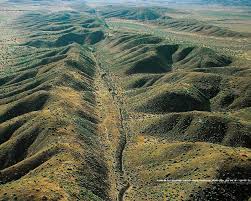
January 6, 2013 – CALIFORNIA - Twenty-three hundred years ago, hordes of mice, snakes, and insects fled the Greek city of Helike on the Gulf of Corinth (map). “After these creatures departed, an earthquake occurred in the night,” wrote the ancient Roman writer Claudius Aelianus. “The city subsided; an immense wave flooded and Helike disappeared.” Since then, generations of scientists and folklorists have used a dizzying array of methods to attempt to predict earthquakes. Animal behavior, changes in the weather and seismograms have all fallen short. One theory is that when an earthquake looms, the rock “goes through a strange change,” producing intense electrical currents, says Tom Bleier, a satellite engineer with QuakeFinder, a project funded by his parent company, Stellar Solutions, of Cambridge, Massachusetts. “These currents are huge,” Bleier said at the AGU meeting. “They're on the order of 100,000 amperes for a magnitude 6 earthquake and a million amperes for a magnitude 7. It's almost like lightning, underground.” To measure those currents, Bleier's team has spent millions of dollars putting out magnetometers along fault lines in California, Peru, Taiwan, and Greece. The instruments are sensitive enough to detect magnetic pulses from electrical discharges up to 10 miles (16 kilometers) away. “In a typical day along the San Andreas fault (in California), you might see ten pulses per day,” he told National Geographic News. “The fault is always moving, grinding, snapping, and crackling.” Before a large earthquake, that background level of static-electricity discharges should rise sharply, Bleier said. And that is indeed what he claims he's seen prior to the half dozen magnitude 5 and 6 earthquakes whose precursors he's been able to monitor. “It goes up to maybe 150 or 200 pulses a day,” he said. The number of pulses, he added, seems to surge about two weeks before the earthquake then drop back to background level until shortly before the fault slips. “That's the pattern we're looking for,” he said. –NG